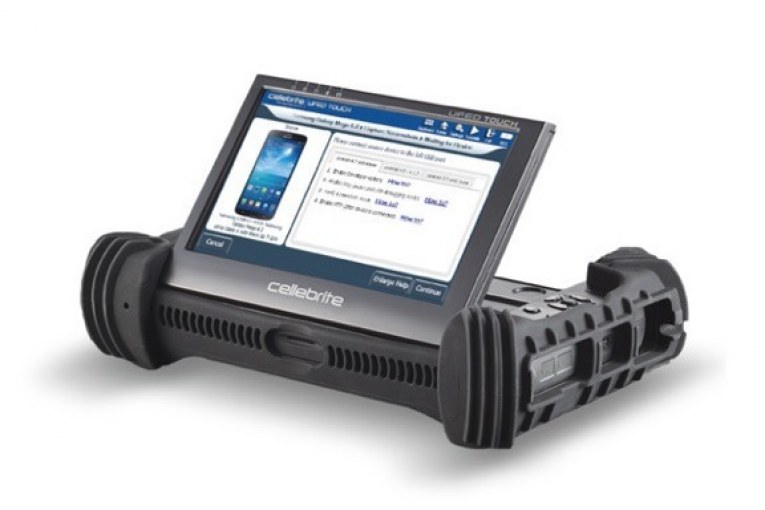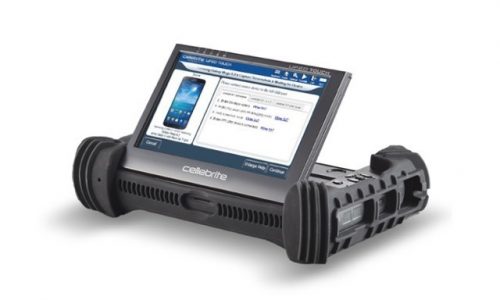

Nearly two weeks ago the Yolo County District Attorney’s Office formally dismissed kidnapping charges against Sander Findlay. This troubling case saw the incarceration of a man with clear evidence of innocence provided by cellular data. That evidence was available to the defense as of April 2017, but it took another year and a half for the DA to dismiss.
While a lot of the burden will fall on a highly problematic use of a photo lineup involving a 12-year-old who only observed the suspect through a mask, more scrutiny needs to fall on the city of Davis’ fledgling Surveillance Technology Ordinance which took effect on May 3. This week the council reviews ten technologies as required under the ordinance, including Cellebrite.
In December 2017, the defense representing Mr. Findlay filed a motion to dismiss relying on a report from April 2017 by Thomas Blackburn.
In a motion filed by Deputy Public Defender John Sage, he argued, “Using the data obtained from Mr. Findlay’s cell phone, Mr. Blackburn concludes that there is no cell phone evidence that can place Mr. Findlay’s cell phone at the location of the incident in Davis, California, on December 14,2016, between 3:30 PST and 4:00 PM PST.”
Mr. Blackburn in his report concludes: “Based on the cell tower sector and azimuth information, the CDR records do show that the defendant’s cell phone was somewhere on the west side of I-505 at or  near an area around Lake Berryessa on December 14, 2016 between 3:00 PM PST and 4:30 PM PST.”
near an area around Lake Berryessa on December 14, 2016 between 3:00 PM PST and 4:30 PM PST.”
Despite this evidence, the DA, in opposing a motion to dismiss, argued that Mr. Findlay never made a statement about his whereabouts to police. They argued that “even if the court and the People were to adopt Mr. Blackburn’s conclusion about the cell phone data and location as true, those conclusions simply prove that a cell phone belonging to the defendant was ‘somewhere on the west side of I-505 at or near an area around Lake Berryessa on December 14, 2016 between 3:00 PM PST and 4:30 PM PST.’”
Deputy DA Deanna Hays argued, “This does not mean that the defendant was in that area; only that a cell phone belonging to him was in that area. Defendant wants to rely solely upon this report, and defendant’s self-serving declaration provided only in support of his motion to dismiss, as evidence the People are prosecuting the wrong person.”
It was only when the People had evidence of the cell phone records, along with those from his ignition-interlock device installed in his vehicle following a drunk driving conviction, that placed him on his phone and car near Lake Berryessa that the People moved to dismiss.
The People finally conceded there was strong evidence that “Mr. Findlay would be present with his car and his phone at that time.” She added that she did not believe a jury would find evidence beyond a reasonable doubt, despite an identification in a photo lineup selecting Mr. Findlay.
The question is, could this have been avoided with due diligence by the Davis Police Department – not only in better scrutiny of a very flawed eyewitness identification, the only actual evidence linking Mr. Findlay to the crime – but in a better use of technology the Davis Police Department possessed which could have exonerated him very early in the process?
Interestingly enough, one of the surveillance technologies reviewed by the council is Cellebrite or CUFED (Cellebrite Universal Forensic Extraction Device).
In the staff report, the chief writes: “The CUFED is a forensic tool used to extract data from mobile phones, smartphones, and personal digital assistants (PDA’s). The device itself is not surveillance technology. It simply extracts data from a device.”
But here is a key note: “Phones and similar devices contain valuable information that is used in criminal prosecutions (pictures, texts, phone records, documents, GPS data).”
It further notes: “Phones may also contain exculpatory information or data that may clear a person from suspicion or is required to be discovered to the defense in a criminal case. Cell phone data can simply not be ignored in modern policing and investigative work because not only do the phones contain a wealth of information, but also because jurors expect to have physical data that links persons to criminal activity.”
Later in the report they add that “the Davis Police Department may simply not investigate crimes and/or prosecute crimes because the investigations would be constitutionally deficient if potentially exculpatory evidence was available, but not searched as allowed by state and federal law and disclosed as required by state and federal law.”
That brings us to a very critical question that the police and ultimately the Davis City Council has to answer for themselves. The police arrested a man on very serious charges. They took his cellphone. They had access to technology that would have shown his whereabouts and would have exonerated him.
And yet it was left up to the defense to produce this information and ultimately convince the district attorney’s office that there was evidence of innocence in this case – the evidence that the man’s cellphone was in another location at the time of the crime.
The result of these mistakes by the Davis Police Department is that not only was an innocent man incarcerated, but the actual perpetrator, the man who attempted to grab and possibly take or otherwise harm a 12-year-old girl is at large.
The use of the Cellebrite device is considered controversial, as admitted by the police in their own policy as they note that 90 percent of adults have a cellphone and they contain an enormous amount of private individual information.
The police want to be able to have access to this technology, but that access, if it is to be allowed, must be a two-way street. It cannot simply be used as a tool for the prosecution. It must also be used as a way to exonerate innocent people – as would have been the case here.
If this technology is to be continued to be allowed, the rules of its use must be better clarified.
—David M. Greenwald reporting


This one bothers me even more than Grijalva. Grijalva was never actually going to do time. However, this guy spent nearly two years in jail and they had evidence that he was innocent. Crickets from the DPD and DA defenders.
This should be one of many reasons to recall/vote out Reisig by 2023 at the latest.